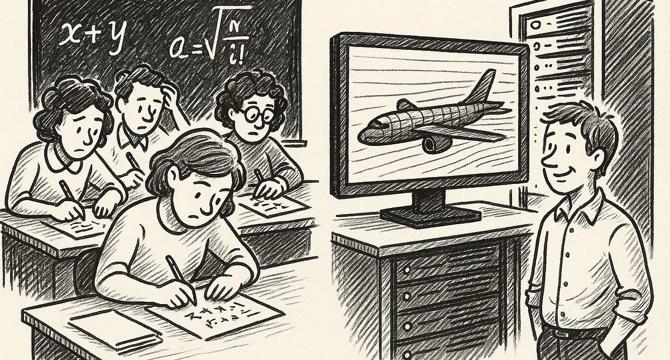Medium
1M
407

Image Credit: Medium
From Numbers to Neurons: How AI is Revolutionizing Computer-Aided Engineering
- Engineering has evolved significantly from manual calculations to AI-driven simulation environments, transforming the field of Computer-Aided Engineering (CAE).
- Historically, human-computers at organizations like NASA calculated trajectories and mission-critical data manually, showcasing the importance of human intellect in early engineering efforts.
- Introduction of formal numerical methods like the Finite Element Method (FEM) and computing machines automated complex calculations, leading to the development of CAE.
- NASA's NASTRAN in the mid-1960s was a pivotal engineering software system running on mainframes, heralding a significant leap for CAE.
- Advancements in computing power through Moore’s Law and cloud-based HPC services have revolutionized simulation capabilities in engineering across various industries.
- AI and Machine Learning are now integrated into CAE workflows, enhancing prediction accuracy, exploration in design, and offering faster and more efficient simulations.
- AI augments physics in CAE, offering hybrid workflows that combine the predictive power of numerical modeling with the speed of machine learning.
- AI-driven CAE presents challenges such as data quality, interpretability, and scalability that need to be addressed for reliable outcomes.
- The future of CAE involves real-time integrations, AI-enhanced models for predictive maintenance, and the convergence of CAE, AI, and real-world data for a closed-loop engineering ecosystem.
- Companies like NVIDIA and Autodesk are developing tools that blend machine learning with traditional physics modeling, leading to faster innovation cycles and interactive simulations.
- The evolution of CAE mirrors human technological advancement; now, with AI intersecting with traditional engineering, the challenge lies in effectively utilizing these tools for quicker, more informed, and physics-rooted innovations.
Read Full Article
24 Likes
For uninterrupted reading, download the app